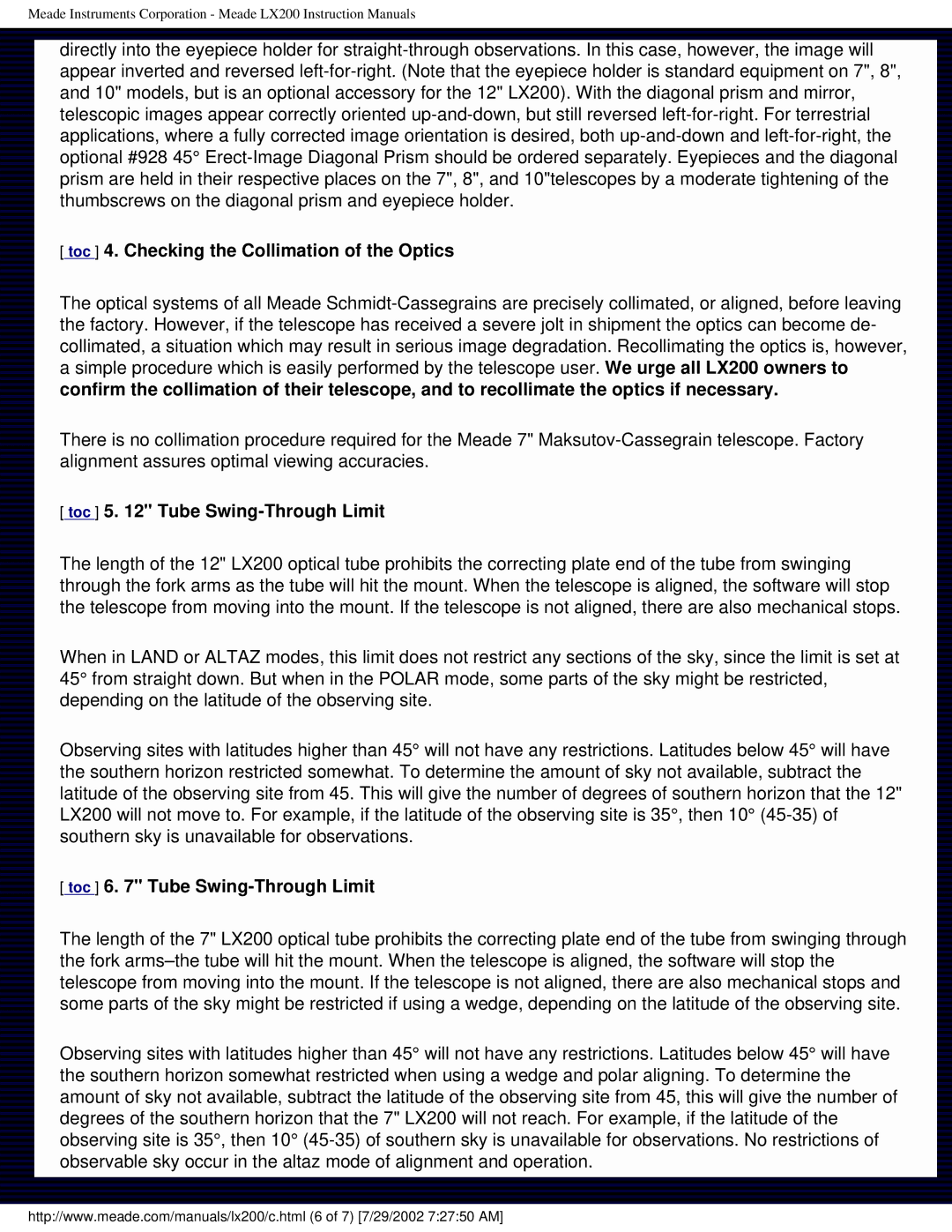
Meade Instruments Corporation - Meade LX200 Instruction Manuals
directly into the eyepiece holder for
[ toc ] 4. Checking the Collimation of the Optics
The optical systems of all Meade
There is no collimation procedure required for the Meade 7"
[ toc ] 5. 12" Tube Swing-Through Limit
The length of the 12" LX200 optical tube prohibits the correcting plate end of the tube from swinging through the fork arms as the tube will hit the mount. When the telescope is aligned, the software will stop the telescope from moving into the mount. If the telescope is not aligned, there are also mechanical stops.
When in LAND or ALTAZ modes, this limit does not restrict any sections of the sky, since the limit is set at 45° from straight down. But when in the POLAR mode, some parts of the sky might be restricted, depending on the latitude of the observing site.
Observing sites with latitudes higher than 45° will not have any restrictions. Latitudes below 45° will have the southern horizon restricted somewhat. To determine the amount of sky not available, subtract the latitude of the observing site from 45. This will give the number of degrees of southern horizon that the 12" LX200 will not move to. For example, if the latitude of the observing site is 35°, then 10°
[ toc ] 6. 7" Tube Swing-Through Limit
The length of the 7" LX200 optical tube prohibits the correcting plate end of the tube from swinging through the fork
Observing sites with latitudes higher than 45° will not have any restrictions. Latitudes below 45° will have the southern horizon somewhat restricted when using a wedge and polar aligning. To determine the amount of sky not available, subtract the latitude of the observing site from 45, this will give the number of degrees of the southern horizon that the 7" LX200 will not reach. For example, if the latitude of the observing site is 35°, then 10°
http://www.meade.com/manuals/lx200/c.html (6 of 7) [7/29/2002 7:27:50 AM]
